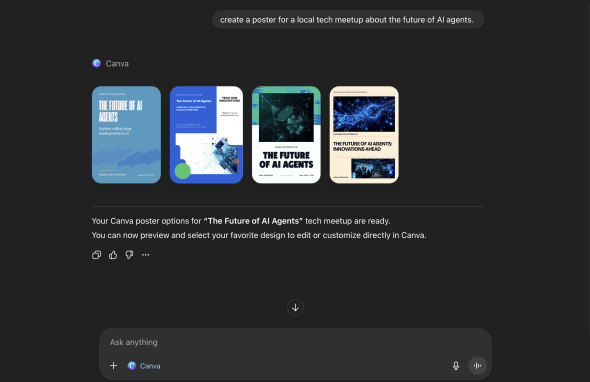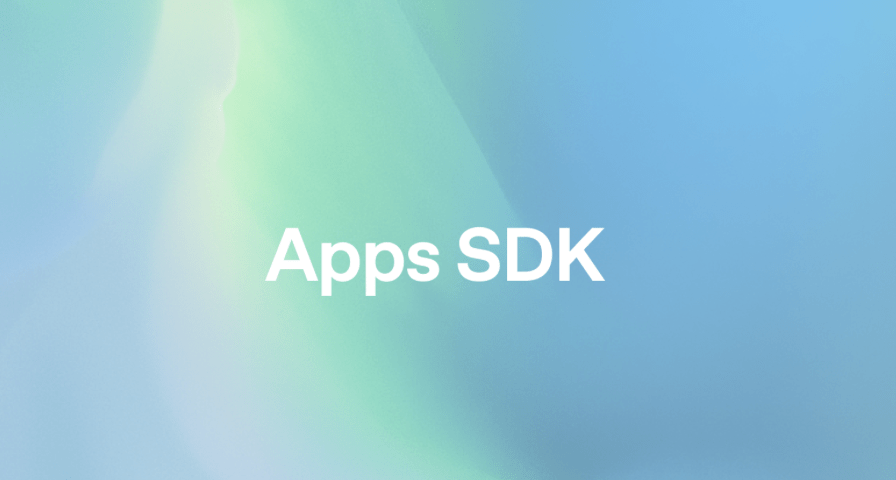OpenAI SDK: Unifying Your Workflow Inside a Single Chat
The OpenAI SDK is a software development kit that lets developers build applications that run directly within the ChatGPT interface. Developed by OpenAI and launched in a developer preview on October 6, 2025, this framework is a significant update from the previous plugin system.
This particular software development kit sdk is a strategic move to change ChatGPT from a standalone chatbot into an application platform. It is designed primarily for developers and businesses aiming to integrate their services into the conversational AI workflow.
The OpenAI SDK’s primary value is its ability to reduce the friction of “app switching.” It allows users to perform complex tasks, like booking travel or designing graphics, through a single, natural-language conversation, altering the traditional model of using separate applications for different functions.
Best Use Cases for OpenAI SDK
- E-commerce and Service Integration: For e-commerce managers or service providers, the software development kit sdk solves the challenge of converting conversational interest into direct action. A user can ask ChatGPT to order groceries, and an integrated Instacart app can populate a shopping cart and display it as an interactive card for confirmation, all within the chat. This creates a direct path from query to purchase.
- Content and Creative Professionals: The OpenAI SDK allows designers and marketers to generate and refine creative assets without leaving their brainstorming environment. A user could describe a marketing campaign concept to ChatGPT, which could then invoke a Canva app to create a series of social media posts or a Figma app to draft a wireframe, presenting the initial designs directly for in-chat feedback and iteration.
- Travel and Hospitality Specialists: For travel agents or platforms like Expedia and Booking.com, this tool simplifies the entire booking process. A user can state, “Find me a flight to New York and a hotel near Central Park for next week,” and the integrated app can present flight options and hotel carousels directly in the chat, allowing the user to select and book without visiting another website.
- DevOps and IT Administrators: For technical teams, the OpenAI SDK can be used to build custom internal tools that simplify complex workflows. A DevOps engineer could create an app that allows them to query server logs, restart a service, or create a Jira ticket by simply typing a natural language command into ChatGPT, speeding up routine operational tasks.
Large User Distribution: The OpenAI SDK gives developers direct access to ChatGPT's large and highly engaged user base, creating a powerful channel for app discovery and usage.
Integrated In-Conversation UI: Unlike older plugins, the SDK can render rich, interactive components like forms, cards, and carousels directly in the chat, creating a more fluid user experience.
No Additional Token Costs: OpenAI does not charge developers or users extra for using apps. Costs are only incurred if the developer's backend makes its own calls to OpenAI APIs.
Intelligent, Proactive Invocation: ChatGPT's underlying model intelligently decides when an app is needed and can even suggest apps to the user proactively, improving discoverability.
Built on an Open Standard: The OpenAI SDK is based on the Model Context Protocol (MCP), an open standard that promotes a more interoperable and standardized structure for AI tools.
Industry-Wide Adoption: Major brands like Figma, Canva, Spotify, and Expedia were launch partners, signaling strong industry confidence and a strong future collection of apps.
Reduces App Switching: The core benefit is creating a "conversation-native" experience that consolidates multiple tasks into a single interface.
Platform Lock-In: Building on the OpenAI SDK creates a significant dependency on OpenAI's platform, including its review process, policies, and model updates.
Currently in Developer Preview: The software development kit sdk is not yet fully mature. Key details regarding the public app directory, monetization strategies, and the final app submission process are still to be announced.
Data Governance Questions: There are open questions about how much conversational context an app can access and how OpenAI will manage app discovery to maintain a competitive marketplace.
Demanding Technical Requirements: The framework requires developers to adopt a "contract-first" approach by defining precise JSON schemas, which is more rigorous than previous integration methods and may present a steeper learning curve.
-
Model Context Protocol (MCP): The foundational open standard that defines how apps communicate with the AI model and how their UI is rendered within the chat.
-
In-Conversation UI Components: Apps can display a variety of rich interfaces, including interactive cards, forms for data entry, and swipeable carousels for displaying multiple options.
-
Model-Mediated Invocation: The AI model analyzes the user’s intent and autonomously decides which app to call, passing the necessary structured data to it automatically. This is a core function for creating effective openai sdk agents.
-
App Discovery: OpenAI plans to launch an app directory and enable ChatGPT to proactively suggest relevant apps to users during a conversation, aiding user growth.
-
Developer Mode Access: The OpenAI SDK is currently accessible to developers who have developer mode enabled in ChatGPT, allowing for immediate testing and iteration.
-
HTTPS Server Requirement: Applications must be hosted on an MCP server that is reachable via HTTPS, providing a secure connection between the app and OpenAI.
-
Structured Data Exchange: Apps communicate with the model using clearly defined JSON schemas, promoting reliable and predictable interactions.
-
Cross-Plan Availability: Once launched, apps will be available to all ChatGPT users, including those on the Free plan, maximizing potential reach.
 OpenAI SDK Agents
OpenAI SDK Agents
Frequently Asked Questions
-
What is the OpenAI SDK?
The OpenAI SDK is a development framework that allows applications to be built and run directly inside the ChatGPT conversational interface. -
Who developed the OpenAI SDK?
OpenAI developed and launched the software development kit sdk on October 6, 2025. -
How much does the OpenAI SDK cost?
The SDK is free for developers to use and does not add extra token costs for the end-user. -
Who is the target audience for the SDK?
The primary audience is software developers and businesses who want to integrate their services with ChatGPT. -
What problem does the SDK solve?
It solves the problem of “app switching” by allowing users to complete tasks from multiple services within a single, continuous conversation. -
What is the Model Context Protocol (MCP)?
MCP is the open standard on which the OpenAI SDK is built, defining how tools and their user interfaces are structured and rendered within the chat. -
Is the OpenAI SDK available to everyone?
It is currently in a developer preview, primarily for developers with developer mode enabled or those on an Enterprise plan.
Tech Pilot’s Verdict on OpenAI SDK
I’ve been tracking the development of AI agents for years, and the move from command-line plugins to fully integrated graphical experiences has been a long-awaited next step. The OpenAI SDK is not just an update; it’s a change in what an AI chatbot can do. My goal was to assess if this SDK is truly the foundation for a new group of applications or just a better-looking version of the old plugins.
My test involved one of the launch partners, Canva, to see how the connection worked in practice. I gave a straightforward prompt: “Use Canva to create a poster for a local tech meetup about the future of AI agents.” I specified the event title, date, and a call to action. Within moments, ChatGPT processed the request and invoked the Canva app, producing an initial poster design directly within our chat conversation. It wasn’t just a link; it was a rendered preview of the poster.
This in-conversation UI is the SDK’s most important feature. The ability to generate a visual asset from a simple text command, and then refine it without leaving the chat, is a definite improvement over the old method of switching between applications. It changes the chat from a text-based Q&A into a dynamic, interactive workspace.
Top Alternatives to the OpenAI SDK
-
LangChain: LangChain is an open-source framework for building custom AI agents and workflows. It is model-agnostic, meaning you can use it with models from OpenAI, Google, Anthropic, and others. Compared to the OpenAI SDK’s focus on in-chat UI, LangChain excels at orchestrating complex, multi-step backend processes.
-
Microsoft AutoGen: Microsoft’s AutoGen is a more specialized, open-source framework for creating multi-agent systems where several AI agents collaborate to solve a problem. Think of it as building a team of AI specialists. While the OpenAI SDK connects a single app to a user, AutoGen connects multiple agents to each other. It is useful for highly complex, research-oriented tasks.
-
StackAI: StackAI is an enterprise-focused, low-code platform for building internal AI tools and chatbots. Its main differentiator is its visual, drag-and-drop interface and its strong focus on enterprise-grade security and compliance (SOC 2, HIPAA).
Final Verdict
In summary, the choice is clear: use the OpenAI SDK if your goal is to deliver a service directly to the large user base within the ChatGPT interface.

